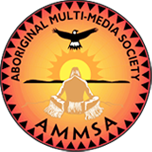Article Origin
Volume
Issue
Year
Page 9
The latest figures from the Regional Longitudinal Health Survey (RHS) show that smoking rates among First Nations people in Canada is dropping, but by the end of 2005 researchers with RHS hope to be able to tell us why.
Statistics from the 2002-03 RHS put the rate of smoking among First Nations people age 20 and over at 57.6 per cent, down 4.4 per cent from survey figures for 1997 and 1991, when the rate was 62 per cent.
Jane Grey, national co-ordinator of the RHS is encouraged by those results.
"To me that is good news. Something is working."
While the numbers show fewer First Nation people are smoking, the rates are still high when compared to numbers for the Canadian population as a whole. With smokers making up only 26 per cent of the general Canadian population, smoking rates among First Nation people is more than double the national average.
These statistics are from the preliminary results of the adult portion of the RHS, released in September. Preliminary survey results from the health survey portions dealing with children and adolescents are expected to be released in the late spring or early summer, with the detailed survey results expected in late 2005.
Those detailed results will contain a lot more than numbers, Grey explained. The section on smoking, for instance, will include information on why people who stopped smoking decided to quit.
"It might give us a good indication of what helped the smoking rates go down," she said.
"We'll be able to report among adolescents, when did they begin smoking? ... In the results from 1997, children were smoking. The age of 16 seemed to be the critical age when individuals started smoking. So with the new results, we're going to be able to report on whether that's changed or not ."
These types of detailed survey results will provide valuable information for people working to get smoking rates down within their own communities by showing them what types of programs or approaches have been successful in getting people to quit smoking.
The final RHS will provide information on a lot more than smoking, however. The questionnaires used for the survey included a range of questions dealing with health, wellness and more.
A total of 22,603 surveys were completed by First Nation people from across the country for the latest sampling, answering questions on everything from language use, education and employment to physical activity, nutrition, dental care, use of and access to health services, and use of traditional medicines and healers. Other questions dealt with alcohol and drugs, HIV, sexuality, pregnancy, mental health, community wellness, culture, spirituality and religion, and the impacts of residential schools.
The goal of the RHS is to conduct surveys every four years, using the information gathered to help First Nation people improve their health and living conditions.
What makes the RHS different than other research done about First Nation people in the past is that this process is being done by First Nation people for First Nation people.
- 1127 views
